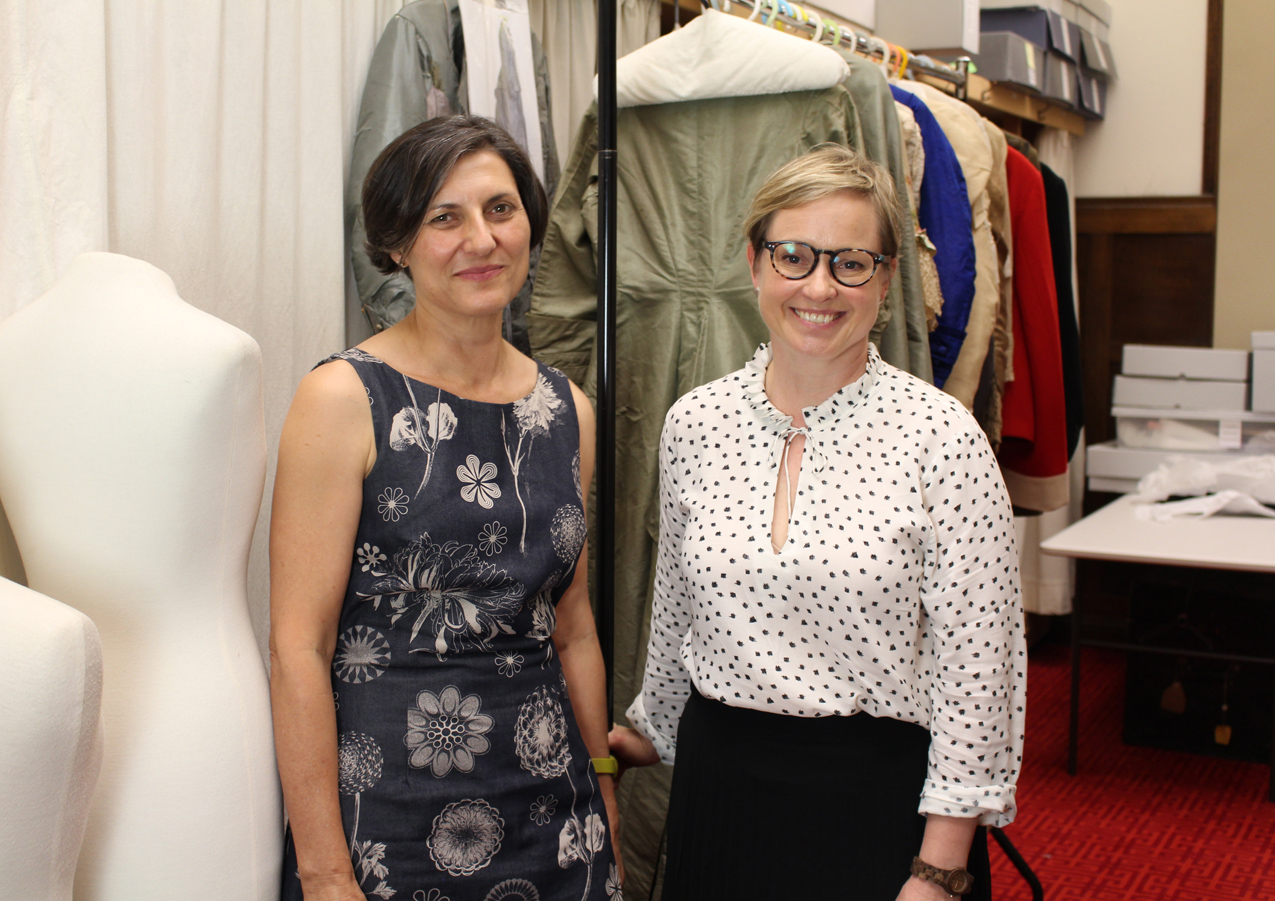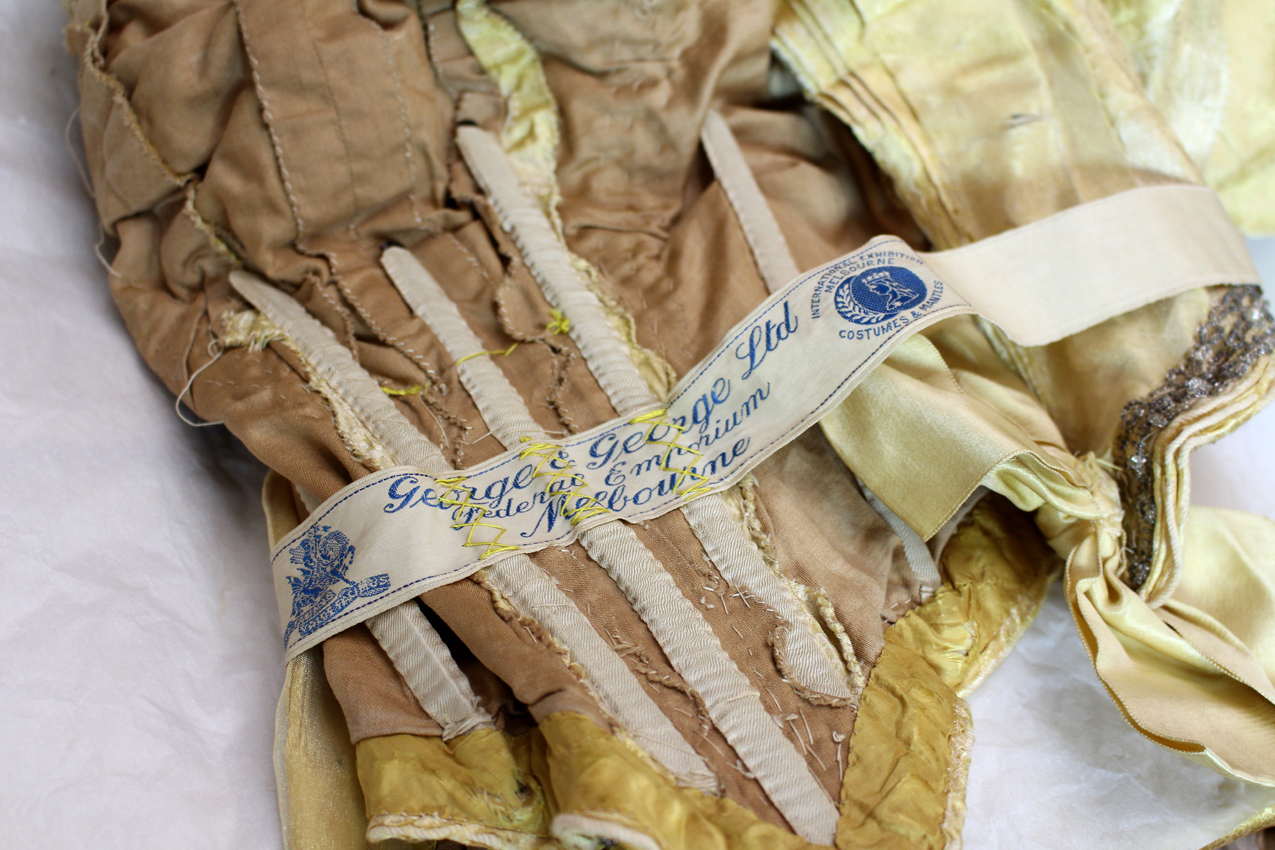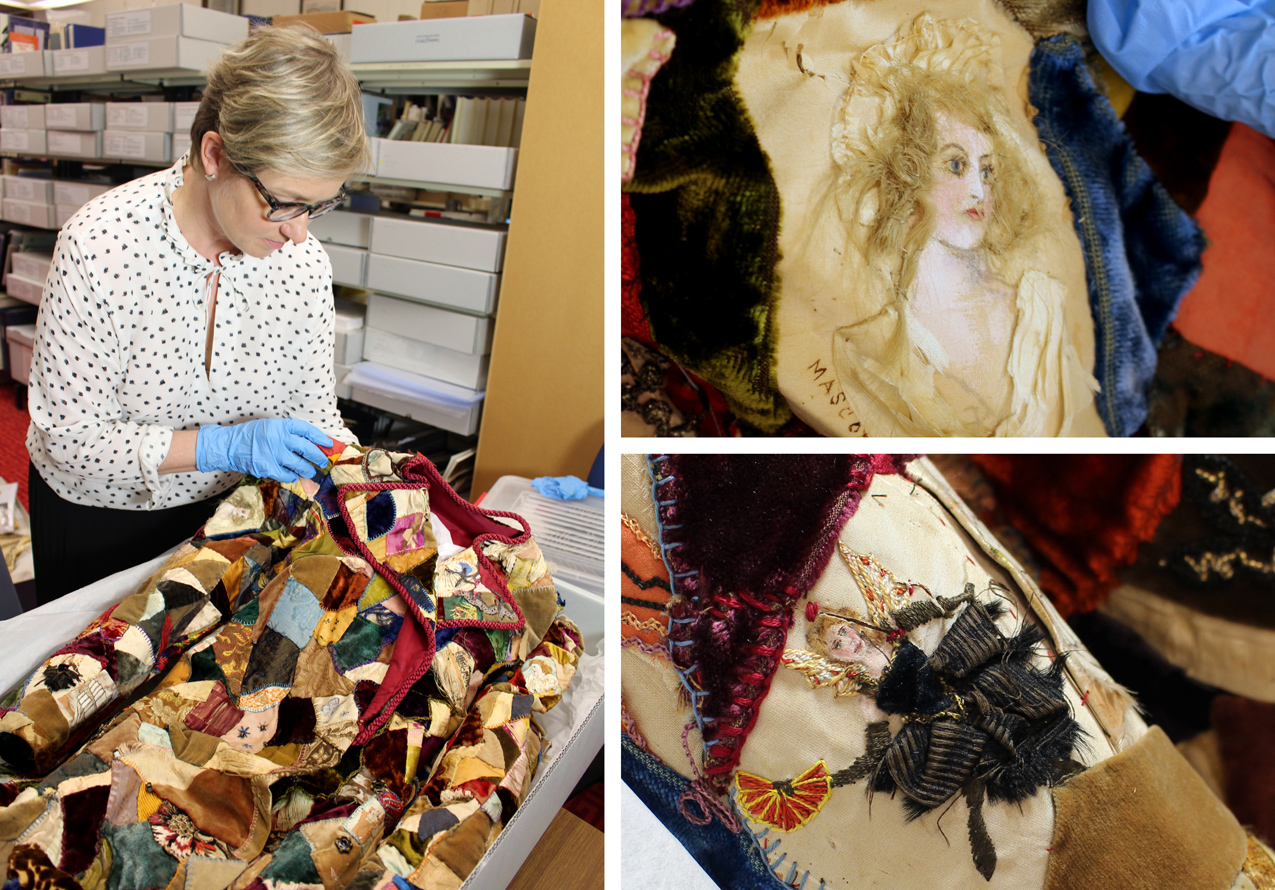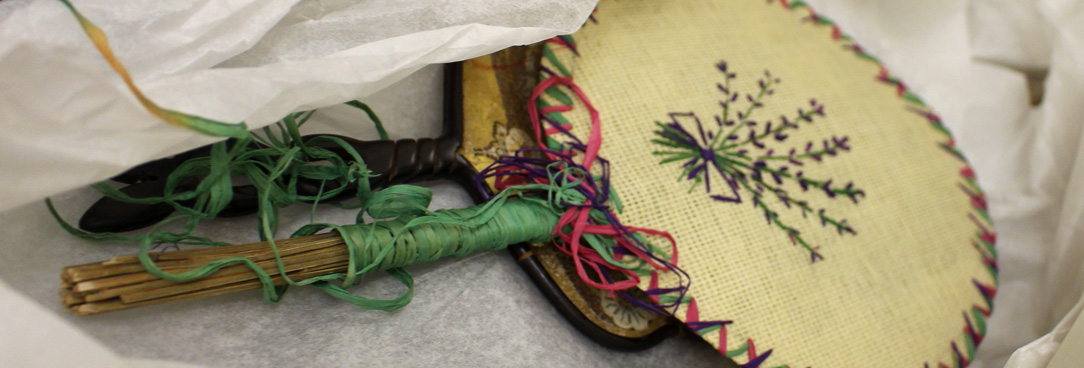
Author: Natasha Cantwell
Communications & Public Programming Officer
If you’re searching for Melbourne’s historical treasures, it’s worth digging a little deeper. Look beyond the major galleries and museums and you’ll find items of state significance in collections held by local historical societies right across Victoria. I spoke to Annabel Butler and Laura Jocic about their project to conserve one of these important collections, which received funding through the 2016-17 round of the Local History Grants Program.

When Annabel and Laura first discovered the costume collection at The Brighton Historical Society, they knew they had found something unique. Annabel, who has a background in shoemaking, image consultancy and theatre, began volunteering at the society in 2013. Delving into the cupboards, drawers and boxes, she uncovered historical clothing and accessories from 1970s silver platform shoes right through to a floral day dress, circa 1820. It became immediately obvious to her how important it was to conduct further research into this significant collection.
She was impressed with the amount of work the society’s president Di Reidie had put into conserving the collection, however, at well over 1000 items (and growing!) this was an immense task and there was still so much more that could be done. Annabel was especially keen to exhibit the pieces online and began work uploading 38 items to Victorian Collections.
Making them easily accessible to a wider audience has already assisted both the public and the collection. Annabel notes that several of these items have benefitted from members of the public providing her with additional information on their historical context, after seeing them on the website.
In 2015 Laura became involved with the collection through research for her PhD “Australian Dress: the materiality of a colonial society-in-the-making” and Annabel was eager to utilise Laura’s expertise by bringing her on-board for this project. Laura had a wealth of specialist knowledge in nineteenth century clothing, both from her studies and her experience as a Curator of Australian Fashion and Textiles at the National Gallery of Victoria.
She also had a genuine enthusiasm for the collection and remembers being astounded by what she found, when she first stepped into the back room at The Brighton Historical Society’s headquarters. Many remarkable items caught her eye, including a bodice and skirt, circa 1895, handmade in the dressmaking department of George & George Federal Emporium. What makes this bodice particularly significant is the inclusion of the label, which would have been a relatively new idea at that time in Australia.

Through the hard work of Laura, Annabel, Di and other volunteers, the majority of the collection is now being housed carefully in archival storage. However, conserving a collection isn’t just about making sure the garments don’t deteriorate; you also need to preserve the knowledge around those items. What makes the Brighton Historical Society’s costume collection particularly special is how much is known about individual pieces and how that knowledge adds to the social history of Melbourne.
For example, a patchwork dressing gown was donated to the society in the 1970s, along with a detailed record of the garment’s origins. The dressing gown started life as a ‘crazy patchwork’ quilt belonging to the five sisters of the Hodgens family. Their parents owned the Adelphi Hotel in South Melbourne during the late 1800s and whenever the girls’ friends called in to see them, they would embroider or paint a memento of their stay on a patch of silk or velvet. There are portraits made with real hair, detailed paintings of ships, tiny guitars and even a rooster. Annabel admits that it’s quite an unattractive garment but she loves how fascinating it is.

The collection is full of many more wonderful stories, and in order to preserve the knowledge around the collection, Laura and Annabel are helping to find an audience for these stories. They agree that promoting the collection is vital for its survival, and now, with the help of a Local History Grant, they have the resources they need to not only continue their work preserving and cataloguing the collection, but also to help create awareness around it.
Their plan includes a community workshop, as well as increasing their online collection. An additional 62 items will be added to the Victorian Collections page, including one of Laura’s personal favourites; a princess line wedding dress with historical referencing in the sleeves, which would have been the height of fashion when it was worn, circa 1878.

An additional website with in-depth research on ten significant items will also be created. Much of their information has come from the families who donated the items but ensuring accuracy is essential, and they find the State Library of Victoria, Trove, Ancestry and Public Record Office Victoria useful for fact-checking.
Laura and Annabel note that what’s exciting is that there are items within the collection that are interesting and potentially significant, but have not had their stories uncovered yet. They hope that by choosing carefully which pieces to showcase on-line, they’ll be able to draw attention to the possibilities within the collection for future research, as well as help the wider community become aware of the collection and its significance.

Material in the Public Record Office Victoria archival collection contains words and descriptions that reflect attitudes and government policies at different times which may be insensitive and upsetting
Aboriginal and Torres Strait Islander Peoples should be aware the collection and website may contain images, voices and names of deceased persons.
PROV provides advice to researchers wishing to access, publish or re-use records about Aboriginal Peoples
